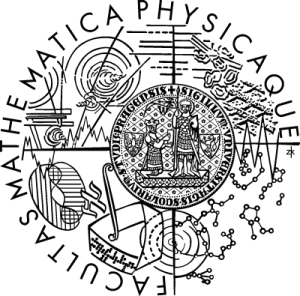
flyer

schedule

program




Last update:
10.02.2020
|
Program
The schedule and the detailed program are available in pdf
Plenary speakers
| Mechanics of soft tissues |
 |
Valentina Balbi
Department of Mathematics & Statistics
Castletroy
Limerick
Ireland
|
|
|
Soft biological tissues (e.g. skin, internal organs, etc.) have many common
mechanical features: their response to applied forces is markedly nonlinear
and time-dependent; they allow for large strains; they all exhibit the
presence of residual stresses (i.e. they are still under stress when external
loads are removed, because of a build-up of forces due to growth and
remodelling). This series of lectures will focus on different aspects of soft
tissues mechanics, ranging from the constitutive modelling (elastic and
viscoelastic) and modelling of growth processes in soft tissues.
-
Lecture 1: The mechanics of a twisted brain. This lecture will focus
on the mechanical behaviour of the brain under torsion (twisting). I will
use data collected from torsion tests on (pigs) brain samples to quantify the
elastic properties of the brain tissue. Finally, I will show that torsional
impacts, such as a hook punch in boxing and a side impact in a car
accident can also lead to dangerous levels of stretch compatible with
diffuse axonal injury. Examples here.
-
Lecture 2: When time matters: viscoelasticity. Soft tissues are
viscoelastic, i.e. they display both solid and viscous properties when
deformed. Stress relaxation, strain-rate dependence and strain-dependent
relaxation are all macroscopic viscoelastic effects commonly observed in
soft tissues. I will introduced the framework of quasi-linear viscoelasticity
and present a viscoelastic constitutive model for transversely isotropic
materials, such as muscle and tendons, under finite deformation. Examples here.
-
Lecture 3: How to shape an intestine. Morphogenesis is the process
leading to the formation of shapes in living organisms. In this lecture, I
will introduce the theory of morpho-elasticity and use this mathematical
tool to investigate the formation of different geometrical patterns in the
gastro-intestinal system. The morpho-elastic theory is based on the idea
that growth and remodelling generate residual stresses in the tissues.
Accumulation of these stresses can eventually lead to elastic instabilities
and to morphological changes in the tissue. Examples here and here.
|
| Cardiovascular bioengineering |
 |
Abdul Barakat
Hydrodynamics Laboratory (LadHyX)
École polytechnique
Palaiseau
France
|
|
|
I will focus my lectures at the doctoral school on modeling of various cardiovascular bioengineering phenomena at different scales. One of the lectures will be on the macroscopic scale and will focus on optimizing the design and performance of stents. The other two lectures will be at the microscopic (cellular) scale and will focus on modeling force transmission in endothelial cells as well as modeling endothelial cell shape regulation and migration. All the models are motivated by experimental observations.
Keywords: cardiovascular bioengineering, mathematical modeling, endovascular devices, stents. cellular mechanotransduction, cell shape, cell migration, atherosclerosis, optimization.
|
| Modeling biomembranes |
 |
Oded Farago
Biomedical Engineering Department
Ben Gurion University
Be'er Sheva 84105
Israel
|
|
|
Lecture 1: Background on self-assembly and other basic concepts (hydrophobicity, amphiphilic molecules, self-assembly, properties of bilayers, heterogeneous membranes). This is an essential physical chemistry/biophysics minimal overview for the topic.
Lecture 2: The Helfrish model. This lecture will be mainly mathematical and will introduce the concept of local curvature, Helfrish Hamiltonian, thermal fluctuations, etc.
Lecture 3: Multiscale modeling (atomistic, coarse-grained, etc.) of membranes. Perhaps also Monte Carlo and Molecular Dynamics.
|
| Mixture theory |

|
Václav Klika
Department of Mathematics - FNSPE
Czech Technical University
Trojanova 13
12000 Prague
Czech Republic
|
|
|
We shall introduce the concept of continuum thermodynamics and extend it to the theory of interacting continua, the so-called mixture theory or multiphase models [3, 9], while mentioning the various
flavours/frameworks of non-equilibrium thermodynamics. We will discuss both its advantages, e.g. providing a means to disentangle some of the cause-effect relationships in complex materials rather than
working with empirical and complex constitutive equations with hidden relation to material properties
and response, and disadvantages, e.g. more complex models, difficult to solve, problematic identification
of parameter values and constitutive relations, unclear boundary conditions [6, 7].
We will argue that despite the complexity and open problems in mixture theory, the benefits outweight the disadvantages and we will illustrate our point on a formulation of a two-phase model with
osmotic effects due to the presence of ions [8]. This model is directly applicable in cartilage modelling
where we shall illustrate the importance of both boundary and initial conditions.
Whereas usually in continuum mechanics/thermodynamics a lot of attention is paid to plausible bulk
equations (a necessary first step), we will also pause on the formulation of boundary conditions. Can they
be deduced (e.g. from balance equations) [5]? Two approaches will be explored: i) a constitutive theory
for boundaries [1, 10, 11]; ii) multiscale asymptotics [2, 4] to obtain plausible boundary conditions. We
shall see that an alternative inclusion of osmotic effects into the bulk equations will be obtained.
References:
- Gordon S Beavers and Daniel D Joseph. Boundary conditions at a naturally permeable wall. Journal
of fluid mechanics, 30(1):197–207, 1967.
- Carl M Bender and Steven A Orszag. Advanced mathematical methods for scientists and engineers
I: Asymptotic methods and perturbation theory. Springer Science & Business Media, 2013.
- Ray M Bowen. Theory of mixtures. In Cemal A Eringen, editor, Continuum Physics, vol. 3, chapter 1,
pages 1–127. Academic Press, New York, 1976.
- Maria Bruna and S Jonathan Chapman. Diffusion in spatially varying porous media. SIAM Journal
on Applied Mathematics, 75(4):1648–1674, 2015.
- JS Hou, MH Holmes, WM Lai, and VC Mow. Boundary conditions at the cartilage-synovial fluid
interface for joint lubrication and theoretical verifications. Journal of Biomechanical Engineering,
111(1):78–87, 1989.
1
- Václav Klika. A guide through available mixture theories for applications. Critical Reviews in Solid
State and Materials Sciences, 39(2):154–174, 2014.
- Václav Klika, Eamonn A Gaffney, Ying-Chun Chen, and Cameron P Brown. An overview of multiphase cartilage mechanical modelling and its role in understanding function and pathology. journal
of the mechanical behavior of biomedical materials, 62:139–157, 2016.
- Václav Klika, Jonathan P Whiteley, Cameron P Brown, and Eamonn A Gaffney. The combined
impact of tissue heterogeneity and fixed charge for models of cartilage: the one-dimensional biphasic
swelling model revisited. Biomechanics and modeling in mechanobiology, pages 1–16, 2019.
- Josef Málek and Ondřej Souček. Theory of mixtures, lecture notes, 2019. http://geo.mff.cuni.cz/
~soucek/vyuka/materials/theory-of-mixtures/theory_of_mixtures-lecture-notes.pdf,
Last accessed on 2019-10-22.
- DA Nield. The beavers–joseph boundary condition and related matters: a historical and critical
note. Transport in porous media, 78(3):537, 2009.
- Ondřej Souček, Martin Heida, and Josef Málek. On a thermodynamic framework for developing
boundary conditions for korteweg fluids. arXiv preprint arXiv:1906.03463, 2019.
|
| Biomechanics and Modelling in the Heart |
 |
David Nordsletten
Department of Biomedical Engineering and Cardiac Surgery
University of Michigan
Ann Arbor
United States of America
|
|
-
Lecture 1: Cardiac Structure and Mechanics. In this lecture, we will review the hierarchical nature of cardiac muscle and contrast with other tissues in the body. Discussion will focus on how structure enables function in the myocardium. Modeling approaches for both passive and active behavior of the muscle will be reviewed.
Resources:
-
Holzapfel, Gerhard A., and Ray W. Ogden. "Constitutive modelling of passive myocardium: a structurally based framework for material characterization." Philosophical Transactions of the Royal Society A: Mathematical, Physical and Engineering Sciences 367.1902 (2009): 3445-3475.
-
Hunter, Peter J., Andrew D. McCulloch, and H. E. D. J. Ter Keurs. "Modelling the mechanical properties of cardiac muscle." Progress in biophysics and molecular biology 69.2-3 (1998): 289-331.
-
Nash, Martyn P., and Peter J. Hunter. "Computational mechanics of the heart." Journal of elasticity and the physical science of solids 61.1-3 (2000): 113-141.
-
Lecture 2: Continuum Modeling and Clinical Applications in the Heart. Broadening our scope, in this lecture we will look at the whole organ physiology, the physics of the heart and how continuum modeling is providing a paradigm for improving care in clinical applications. We will discuss comprehensive modelling approaches, as well as reduced order approaches and how biomechanics can make an impact in patient care.
Resources:
-
Chabiniok, Radomir, et al. "Multiphysics and multiscale modelling, data–model fusion and integration of organ physiology in the clinic: ventricular cardiac mechanics." Interface focus 6.2 (2016): 20150083.
-
Niederer, Steven A., Joost Lumens, and Natalia A. Trayanova. "Computational models in cardiology." Nature Reviews Cardiology 16.2 (2019): 100-111.
-
Nordsletten, D. A., et al. "Coupling multi-physics models to cardiac mechanics." Progress in biophysics and molecular biology 104.1-3 (2011): 77-88.
-
Winslow, Raimond L., et al. "Computational medicine: translating models to clinical care." Science translational medicine 4.158 (2012): 158rv11-158rv11.
-
Lecture 3: Myocardial Growth and Remodelling. In this lecture, we will examine quantitative approaches for representing the adaptive responses of the heart to the demands of its environment. Specifically, we will review the types of growth and remodelling that occur in health and the typical progressions found in disease. To model these adaptive phenomena, we will discuss two modeling paradigms -- kinematic growth and constrained mixtures.
Resources:
- Ambrosi, D., Gerard A. Ateshian, Ellen M. Arruda, S. C. Cowin, J. Dumais, A. Goriely, Gerhard A. Holzapfel et al. "Perspectives on biological growth and remodeling." Journal of the Mechanics and Physics of Solids 59, no. 4 (2011): 863-883.
- Humphrey, J. D., and K. R. Rajagopal. "A constrained mixture model for growth and remodeling of soft tissues." Mathematical models and methods in applied sciences 12.03 (2002): 407-430.
- Taber, Larry A. "Biomechanics of growth, remodeling, and morphogenesis." (1995): 487-545.
- Ateshian, Gerard A., and Morton H. Friedman. "Integrative biomechanics: A paradigm for clinical applications of fundamental mechanics." Journal of biomechanics 42.10 (2009): 1444-1451.
|
| Self-organizing cellular systems |
 |
Charisios Tsiairis
Friedrich Miescher Institute for Biomedical Research
Maulbeerstrasse 66
4058 Basel
Switzerland
|
|
|
Cells, which can be viewed as the atoms of life, are aggregated and organized in communities that we recognize as multicellular animals. They manage to achieve this level of organization by operating as agents that exchange information to alter and coordinate their behavior. We are going to examine what are the communication avenues they use with emphasis placed on mechanical signals and how they are generated and perceived by the cells. Two particular cellular systems will serve as case studies to understand how cells achieve spatial and temporal order. The evolutionary very old animal Hydra offers the possibility of exploring how cells incorporate and exploit mechanical signals to enable them to build a tissue with spatial polarity. Separated from Hydra cells by 600 million years of evolution, the embryonic cells that form the vertebrae rely on a spatiotemporal choreography that allows them to produce the periodic segments of the body, exploiting similar communication avenues. We will focus on the mechanism that synchronizes their activity, mining ideas used for understanding mechanical clocks.
|
|















